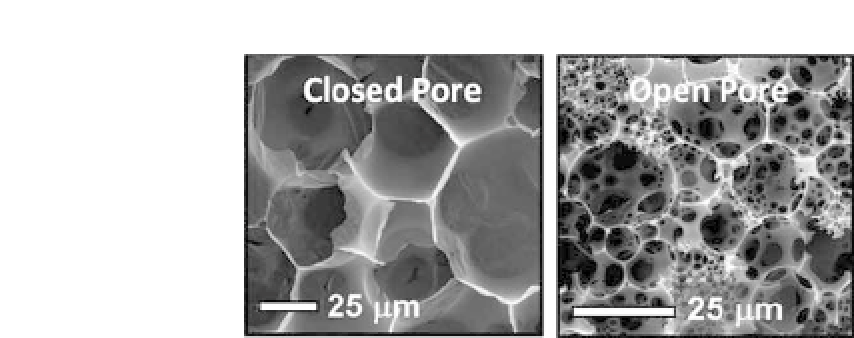Biomedical Engineering Reference
In-Depth Information
Figure 33.4.
SEM of polyHIPEs with open and closed pore structures.
Reprinted with permission from Ref. 37; copyright 2007 American Chem-
ical Society.
33.4 PolyHIPEs as Bone Scaffolds
The first polyHIPE investigated as a bone scaffold was based
on styrene and divinylbenzene.
36
However, the styrene-based
system is nonbiodegradable, which led to the investigation of
polyHIPEs based on poly(
ε
-caprolactone-
co-
styrene), poly(lactic
acid-
co
-styrene), dextran, pullulan, and gelatin.
23
,
46
−
51
Although
high-porosity polyHIPEs were prepared with these formulations,
theirapplicationtobonetissueengineeringstrategiesarerestricted
due to the limited biodegradability of the copolymer systems and
the low mechanical strength of the natural polymers. Fumarate-
based polyHIPEs were developed in the Mikos group using toluene
as a diluent to reduce viscosity su
ciently to permit emulsion
formation.
37
However, osteoblast growth and mineralized matrix
production on these semi- and fully degradable polyHIPEs has yet
to beestablished.
33.4.1
Nondegradable: Styrene-Based PolyHIPEs
Akay
et al
. first investigated polyHIPE scaffolds to support the
growth of osteoblasts
in vitro
.
36
PolyHIPE foams based on styrene
with a divinylbenzene cross-linker were prepared (Fig. 33.5). Ele-
vated temperatures (up to 80
◦
C) during emulsification were uti-
lized to generate a broader range of pore sizes. Rat osteoblasts
were seeded on polyHIPE scaffolds with three average pore sizes








Search WWH ::

Custom Search